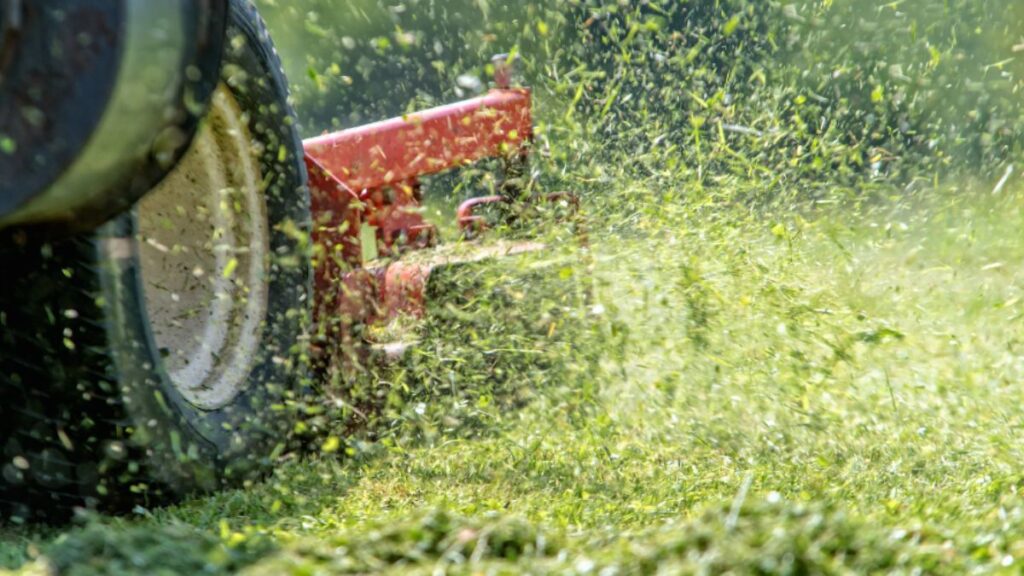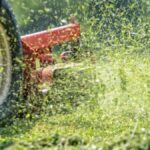Creating a lush, thriving lawn should not compromise the long-term health of our environment. More homeowners are discovering that eco-conscious approaches can nurture beautiful outdoor spaces while preserving local ecosystems and natural resources. Sustainable lawn care is not just a trend; it’s a movement towards mindful land stewardship that recognizes every backyard as part of the larger planet. By embracing these practices, you help prevent the degradation of natural waterways, protect local wildlife, and conserve valuable resources for future generations. Begin by exploring eco-friendly approaches that promote healthy, attractive lawns and support a sustainable future, not just for your own yard, but for your entire community. If you’re searching for experts in your area, discover professional Connecticut lawn care services that can help you make informed, sustainable choices tailored to your locale.
By integrating sustainable lawn care into your routine, you play a vital role in reducing water consumption, avoiding toxic chemical runoff, and minimizing pollution—all while enjoying a beautiful outdoor space. Smart choices in grass selection, watering, fertilization, and pest control all add up, making a meaningful difference for the planet and your community. The benefits aren’t just environmental—sustainable practices can result in healthier, more robust lawns year after year that are naturally resistant to pests and diseases. Over time, you’ll also notice long-term savings on utilities, fertilizers, and maintenance as your yard becomes more self-sufficient and less reliant on outside inputs.
Selecting the Right Grass Species
The foundation for sustainable lawn care begins with selecting the right grass. Native or drought-resistant varieties adapt to local conditions, using less water and reducing the risk of disease and pest infestations. Additionally, native grasses have evolved in tandem with local rainfall patterns, temperature fluctuations, and soil conditions, rendering them inherently more resilient. Native species not only demand less frequent irrigation but also provide food and shelter for important pollinators, ground beetles, and butterflies. Integrating native plants alongside grasses further improves garden biodiversity and resilience against pests, creating a small haven for wildlife right in your backyard. With the right choice, homeowners can enjoy lush lawns that require less mowing, watering, and chemical intervention.
Efficient Watering Practices
Water conservation is increasingly important, especially as droughts become more common across many regions of the United States. Lawn irrigation accounts for nearly one-third of all residential water usage, making it a significant target for improvement in efficiency. Sustainable irrigation prioritizes effectiveness: Water early in the morning or late in the evening to reduce evaporation, and aim for deep, infrequent watering rather than shallow daily sessions. Deep watering encourages robust root growth and helps grass develop better drought tolerance, making your lawn more self-reliant during hot, dry spells. Avoid overwatering, which promotes weak roots, waterlogged soil, and fungal issues. Consider installing rain sensors or drip irrigation systems to reduce water waste further and enhance effectiveness, a recommendation echoed by the EPA’s WaterSense program. Mulching with grass clippings or bark chips also retains moisture at the soil’s surface, reducing the frequency and volume of irrigation needed throughout the summer months.
Natural Fertilization Methods
Chemical fertilizers can damage soil health and contaminate waterways through runoff, particularly after heavy rainfall or excessive use. While synthetic options may seem effective in the short term, they often deplete beneficial soil microbes and disrupt nutrient cycles. Opt for organic fertilizers, such as compost or aged manure, which enrich the soil with essential nutrients, micronutrients, and organic matter. Composting yard clippings, leaves, and kitchen scraps produces a nutrient-dense amendment that restores soil naturally and supports beneficial microorganisms. Another simple method is grasscycling, which involves leaving clippings on the lawn after mowing to gradually break down and return nutrients to the soil, thereby reducing the need for additional fertilizers over time. Regular applications of compost or natural mulch help build a robust soil structure, improve water retention, and aid in lawn recovery from stress. These techniques not only boost plant vigor but also enhance the overall health and resilience of your entire landscape while dramatically reducing your environmental impact.
Eco-Friendly Weed and Pest Control
Chemical herbicides and pesticides not only harm unwanted weeds and pests but can also damage beneficial insects, such as bees and earthworms, as well as the soil ecosystems vital for plant health. Start with healthy mowing techniques: Keeping grass at the optimal height shades out weed seedlings and creates inhospitable conditions for many common pests. Look for organic, plant-based herbicides and use mulches to suppress undesired growth. Pulling weeds by hand or spot-treating with vinegar solutions reduces the need for chemical use. Inviting beneficial insects, such as ladybugs, lacewings, or predatory beetles, will naturally manage many pests, limiting outbreaks without harming pollinator populations or beneficial soil organisms. Tree and shrub diversity attracts birds and predatory insects, which naturally control pest numbers. As described by the National Wildlife Federation’s sustainable gardening guide, these practices help maintain a balanced ecosystem where pests are kept in check, reducing the need for intervention and promoting long-term lawn health.
Sustainable Lawn Equipment
Traditional gas-powered mowers and trimmers are significant contributors to neighborhood air and noise pollution, emitting greenhouse gases and particulates during use. Making a shift to more eco-friendly equipment can significantly reduce your household emissions. Switching to battery-powered or electric alternatives slashes emissions and provides a quieter, less intrusive mowing experience for both you and your neighbors. Companies utilize solar charging for their electric equipment, setting a leading example of green innovation in the lawn care industry. Electric options tend to require less maintenance, last longer, and don’t rely on fossil fuels. For smaller lawns, classic manual reel mowers offer a completely emissions-free option and simple, reliable performance, allowing you to enjoy a quiet outdoor chore that also boosts your own physical activity. Regular maintenance of blades and motors maximizes energy efficiency and extends the life of your equipment, minimizing waste.
Promoting Biodiversity
Home lawns are vital habitats for local wildlife, and thoughtful landscaping can transform even the most traditional yard into a sanctuary for birds, insects, and small mammals. By incorporating native plants and cultivating pollinator-friendly gardens, you help support declining bee, butterfly, and songbird populations. Areas rich in biodiversity recover more quickly after droughts or diseases and generally require less human intervention for recovery. Planting wildflowers, ornamental grasses, and shrubs native to your region provides both visual appeal and crucial ecosystem services, such as pest control and improved soil health. Simple additions, such as a small pollinator patch, bird bath, or butterfly garden, can make a significant difference, providing food, water, and shelter for a wide range of species. These vibrant areas not only benefit wildlife but also create stunning focal points, offering year-round color in your landscape.
Alternative Lawn Options
If your property features areas with low foot traffic, consider alternative ground covers, such as white clover, creeping thyme, or moss. These options require less mowing, less water, and offer attractive blooms that enhance curb appeal. Clover, for example, enriches the soil by fixing atmospheric nitrogen, making it available for other plants to utilize. Xeriscaping — utilizing drought-tolerant plants and mulching with decorative stones or gravel — offers a striking and effective approach to reducing both lawn maintenance and water use, especially in regions prone to dry spells or water restrictions. Ground covers are especially useful in shaded or sloped areas where regular grass struggles, offering a low-mow, low-maintenance solution that still delivers visual interest and practical erosion control. These alternatives offer an opportunity to reimagine what a healthy lawn can look like while significantly reducing your overall environmental impact.
Final Thoughts
Thoughtful, sustainable lawn care strikes a balance between the needs of your home and the environment, providing practical solutions that promote a greener future. From selecting resilient grass varieties and implementing smart watering practices to using natural fertilization and adopting eco-friendly equipment, every step you take contributes to a landscape that is both beautiful and beneficial to the planet. By integrating these practices and cultivating gardens that celebrate biodiversity, homeowners can enjoy healthy, thriving outdoor spaces that benefit local ecosystems. Every sustainable choice, no matter how small, helps create a brighter and healthier future for all—so why not start in your own backyard and become part of the movement for ecological stewardship today?





